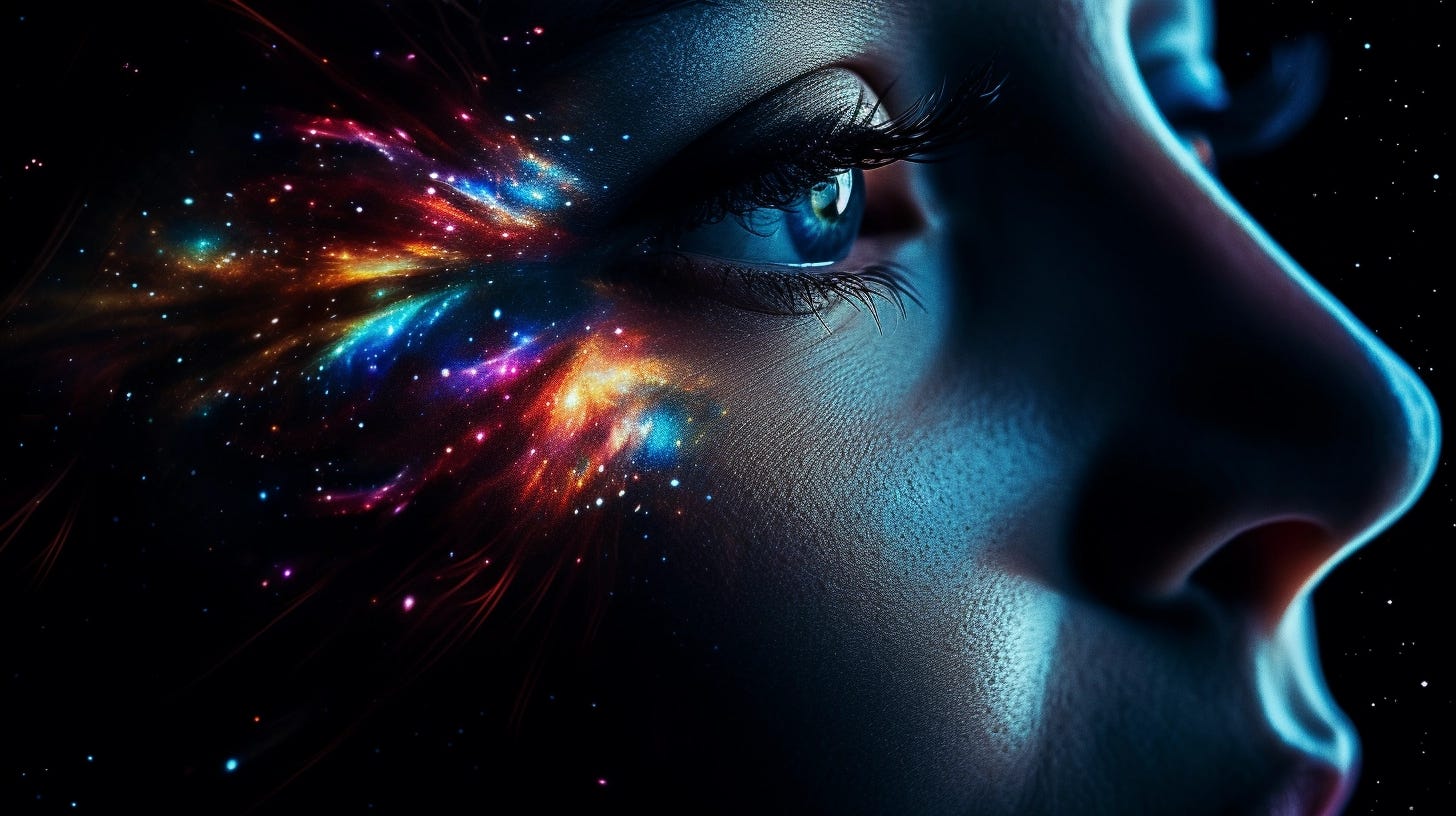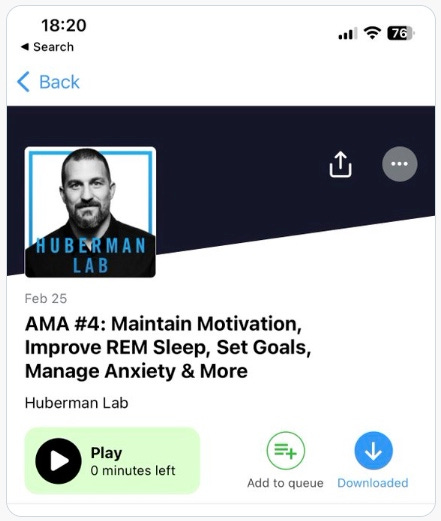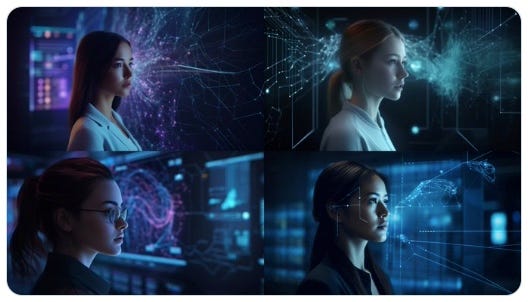#25 / Your Attention Is Like A Stream
Hello my friend! 👋
I had initially planned to send out my newsletter every Saturday or Sunday, but this week it was delayed until Monday. The past week has been incredibly busy for me. I participated in a Hackathon organized by my company, where I enrolled in two different projects. Balancing time and energy between these two projects was challenging, not to mention I also had personal projects to attend to.
Over the weekend, a former colleague of mine shared some insights on how to balance attention at work, which I found quite relevant to my experiences last week. Some people prefer to focus all their energy on one task, while others enjoy multitasking, flexibly distributing their energy across various tasks.
Upon self-reflection, I discovered that I work best when engaged in two projects, albeit with a focus on one. Typically, I would devote the majority of my energy (around 70%-80%) to the primary project while also attending to another, allocating the remaining 20%-30% of my energy to it. The emphasis on these two projects might shift, or they might be aspects of the same project.
For instance, at times, while working on a single project, I might spend 80% of my energy on design and the remaining 20% on communication and expression. I perceive human energy like a stream of water that can be focused into a jet; for me, it seems most manageable when there’s a main flow accompanied by a subsidiary stream. This approach feels not only controllable but also highly flexible.
How about you? How do you manage the distribution of energy and time when switching between different projects?
Here’re a few things I’d like to share with you today 🙂
Thoughts when catching app Apple’s keynote
Update Your Work Efficiency Every Few Years
Retain the “Human Touch” In the Age of AI
The One Thing I Will not Give Up to AI
Thoughts when catching app Apple’s keynote
Years ago, watching Apple’s product launches felt more like “fan-girling” for me. I was riveted by the latest tech innovations and the potential they held. However, in recent years, my focus has shifted. I’m no longer obsessed with specific products. Instead, I’m captivated by how Apple crafts its product narratives, showcases product features from various angles, and masterfully plans and communicates its launches.
If I were to draw a parallel, my previous approach to these events was akin to watching movies for pure entertainment. Now, it’s more like a film student meticulously dissecting each scene, exploring the design logic behind every move.
Working in the tech industry, I’ve long recognized the practicality of these strategies for my work. For instance, while others harped on hardware features, Apple pivoted to emphasize security and privacy. Later, as security and privacy became buzzwords, Apple shifted the conversation towards environmental responsibility. The format of Apple events has also evolved—from live presentations to pre-recorded segments, to now a synchronized launch across different time zones.
Take the Apple Watch presentation as an example. They predominantly showcase it outdoors, underscoring its fitness capabilities. I’ve observed their skill in weaving technical B-rolls when highlighting features, the fluid transitions between speakers, backgrounds, and slides, and the timely incorporation of technical demonstrations. These techniques are a testament to Apple’s decades of expertise.
For me, Apple’s annual events serve as an extensive learning case study—a collaborative effort of top-tier designers, marketers, ad experts, and planners, backed by a hefty budget. Post-launch media interpretations, like those by MKBHD, offer invaluable insights. To me, this is a ready-made, efficient learning platform. Investing just 1.5 hours twice a year, I get a pulse on current trends and further hone my presentation and narrative skills. It’s worth every minute.
Update Your Work Efficiency Every Few Years
In this episode of Andrew Huberman’s podcast, he shared some tips on how to enhance attention and adjust one’s state. Although some of the content had been discussed before, what left a deep impression on me was the life experience of Dr. Huberman’s teacher shared at the end.
His teacher once said that one of the most important abilities of a professional is to know how many effective working hours they have each day, and to update this every four to five years. At first, he didn’t understand, thinking that once you know how many hours you can work each day, for instance, six hours of focused work, then you can extend this time to eight hours after four or five years. However, his teacher explained, when you’re young, you can trade time for results. After gaining some experience, you can accomplish the same task in less time, or understand whether a task is worth doing at all. In this way, the specific working time might decrease, but efficiency would greatly increase.
As professionals, we need to update our work status every few years. This insight is extremely enlightening for me. Because it often happens that despite spending a lot of time on a task, the result is not as good as expected. In this situation, it’s necessary to reflect on one’s work status to see if something is wrong.
Retain the “Human Touch” In the Age of AI
In this AI exploding age, content creators shouldn’t diminish the aspects that showcase human essence. For instance, refrain from using AI-generated voiceovers or relying solely on AI-synthesized videos to represent oneself. While these tools can aid us in mass-producing content, it’s our experiences and creativity that truly set us apart. If you let go of these unique traits, you’ll inevitably find yourself in fierce competition with the ocean of homogeneous content generated by AI.
The One Thing I Will not Give Up to AI
At present, when tackling any task, I always consider if AI can handle it. However, there’s one exception that I don’t hesitate to manage personally: reading, watching movies, and processing other forms of literary information. I make it a point to go through it myself first before contemplating if there’s a need to employ AI for further analysis or summarization. In my perspective, this step is crucial. Bypassing this would be a sign that I gave up the control of my own cognition.
Have a great one and see you soon!
Bear Academy Newsletter
Non-crap tips and thoughts on design, product and technology ✨
🐻 Bear Who?
Hi there 👋, I’m Bear, a seasoned Product Designer with 15 years of overall design experience and six years in product design, transforming the user experiences for millions 📝
As an Apple Award-Winning Podcast Host at BearTalk and a Design Mentor at Springboard and CareerFoundry, I apply my self-taught design skills and science background to solve complicated problems and mentor budding designers 😃
In my downtime, you’ll find me reading, drawing, podcasting, and making videos about everything from tech to design and productivity 👨🎨
🤓 Work
💼 What I do:Product Designer at Xero
🌃 I also do:Design Mentor at Springboard and CareerFoundry / Founder at Bear Academy
🎤 Side hustle:Podcast host at Award-winning podcast BearTalk
💡 Goodies
Bear Academy - my courses around UX Design, AI, etc
Bear Academy Newsletter - my free newsletter, which you are reading now
Beartalking.com - all my posts, English and Chinese
Youtube.com/@Bearliu - A video is worth a thousand words
💬 Contact
https://twitter.com/bearbig - Majorly I post in Chinese
bear@beartalking.com - The old fashion email way
LinkedIn.com/in/bearliu - My professional life






